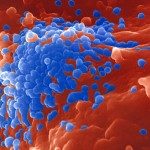Lien vers Pubmed [PMID] – 25298040
Gene Ther. 2015 Jan;22(1):96-103
The mouse is widely used as a model for DNA therapy and vaccination even though the efficiency of DNA delivery in higher mammals and humans is much less. The human APOBEC3 (A3) enzymes impact viral genomes by cytidine deamination, which introduces multiple uridine residues into single-stranded DNA, a process known as genetic editing. This initiates rapid DNA catabolism via a uracil DNA glycosylase dependent pathway. In tissue culture, A3A, A3C and A3B can hyperedit transfected plasmid DNA. We explored plasmid catabolism in vivo initiated by A3A, the most efficient of the human enzymes and one that is functionally conserved across most mammals. As rodents do not encode an A3A enzyme, it was possible to explore DNA degradation in the mouse model. Human A3A genetically edits co-electroporated luciferase plasmid DNA in mouse skeletal muscle that initiates DNA degradation resulting in approximately fourfold decrease in bioluminescence. Part of the degradation occurs in the nucleus as indicated by complex hyperedited DNA molecules. As human A3A is strongly upregulated by interferon α and DNA sensing pathways, it is a strong candidate enzyme for restricting plasmid DNA in higher mammals.

